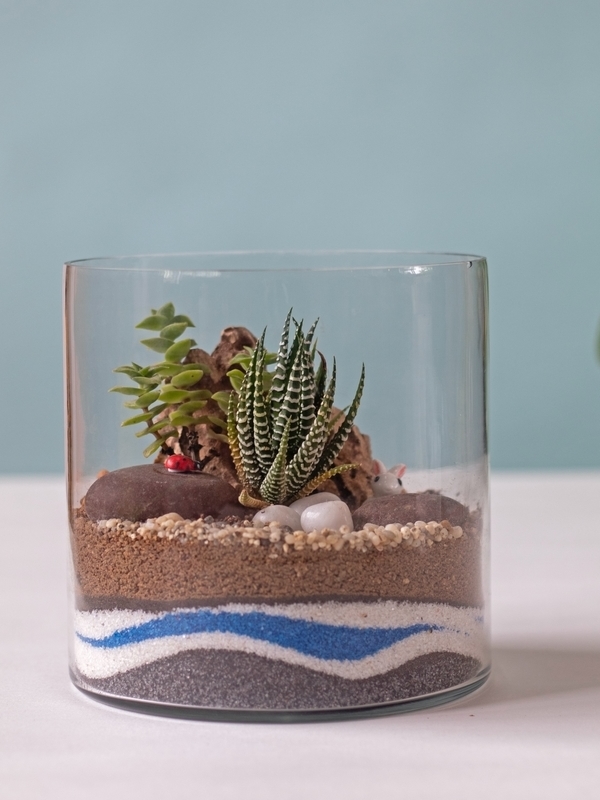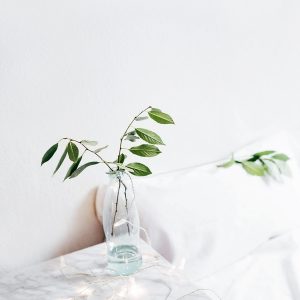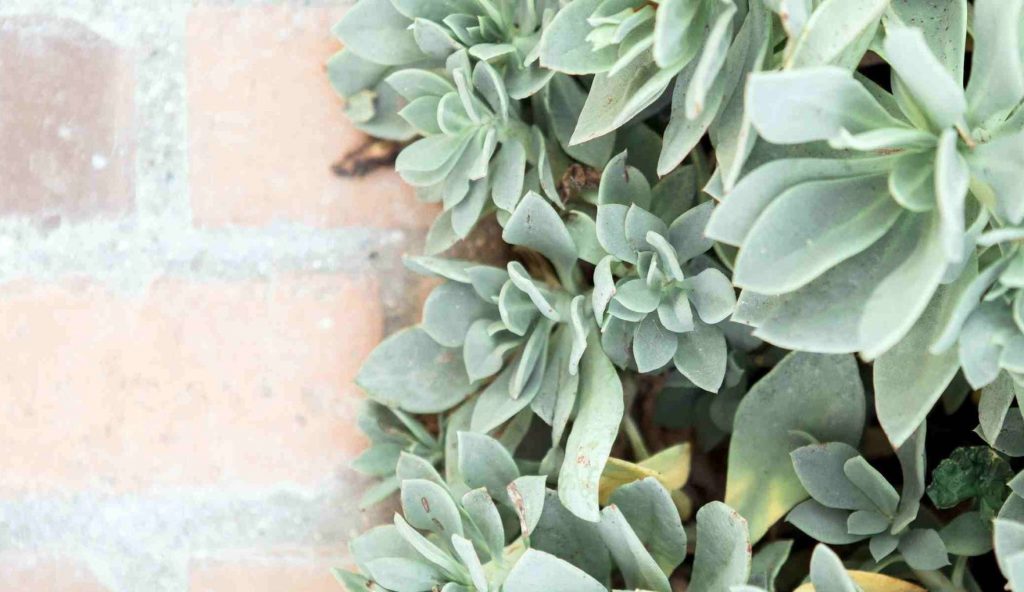Have you ever wanted to start a plant terrarium garden in your house? Trust me, it is pretty easy to create one! I am sure you have seen a terrarium in one of your friend’s houses but didn’t know what it was. I am going to show you how to create one, how it works, tools to use, and how to maintain it.
During the COVID-19 pandemic and the lockdown period, you can invest your time in creating one and feel happy about your creativity. Why not do it with your kids?
Read below for more on how to create your terrarium garden!
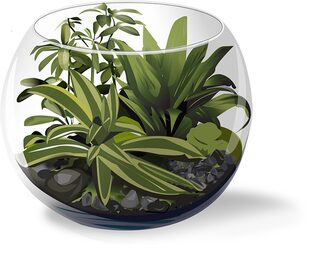
What is a Terrarium Garden?
Terrariums are mini-gardens that are normally confined in small bottles, vases, and jars. It is like an aquarium, but instead of fish, you have plants! The terrarium garden becomes the plants’ habitat.
Terrariums are not usually bulky, so you can put them on a table, reading desk, on a shelf, or make it a fun project with your kids.
They are great for those who love nature but don’t have enough space to keep a wide variety of plants! There are two types of terrariums: Closed and opened terrariums. You can either decide to enclose your plants with a lid or not.
You can also check out my previous article on gardening ideas in small spaces. No more excuses for not having an indoor organic garden in your apartment.
How Does it Work?
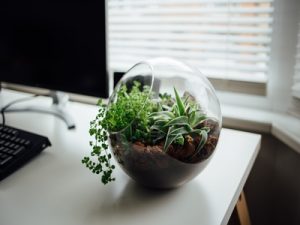
Terrariums are like a small plant garden enclosed in a container. They are fully functional, especially for small spaces.
When it is warm, they cause moisture to evaporate from the plants and soil. Condensation happens, causing the inside to be cool, and letting the water drip down to the plants. This cycle continues over and over!
That’s what makes terrariums self-sustaining. You plant the same way you would in the outdoor garden or pots.
You will need to use fertile soil to make sure the plants grow well. Moreover, when some of the plants die and decompose, the soil gets replenished.
In addition, you will need to maintain temperature, humidity, light, and much more. The essentials for proper plant growth still matter.
How to Create a Basic Terrarium Garden at Home
Terrariums are low maintenance, save on space, and make your space more beautiful. If you are thinking of how best to decorate your home using mini indoor plants, this is a great choice!
What do you Need to Make a Terrarium?
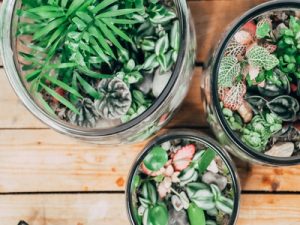
- Transparentcontainer – plastic or glass
- Rocks or pebbles
- Moss / Orchid, if wanted
- Sterile potting soil
- Favorable plants that don’t overgrow
- Gardening spoon
- Tweezers for placing materials
- Fun decorations of different colors like shells
- Garden scissors to cut infested parts
- Spray bottle to water the plants
Steps on how to Create the Terrarium
Now that we have figured out the materials we need, we can get started with creating an ideal terrarium.
Step 1: Find an Ideal Container
Purchase a great terrarium case that you can use to put all the materials in. You can either buy a plastic/glass bottle or container. Moreover, you can choose to use other recyclable items like milk glass bottles, water jars, large kitchen bowls, open containers, and vases.
The container must be strong enough to hold all the materials you will put in the container. Additionally, the container should not have any drainage holes.
Step 2: Fill With Potting Soil
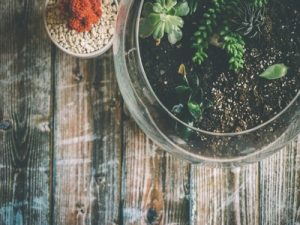
Fill the bottom of your container with half the amount of soil you want to use. You could also start with large rocks at the bottom and then the first layer of soil.
You can use large tweezers to place the materials. Remember to add a good amount of rocks or pebbles to the terrarium garden container.
Step 3: Make a Large Hole
Make a large hole between the components in the container for the plant roots to rest. Take the plants from the planting pot and place them in the container carefully.
Position the plants in the thin layer of soil you had first added. After placing them, add a second layer of soil. The plants should be firmly placed. Let the soil reach the place on the plant it had previously reached when the plant was in the pot.
Step 4: Mix up Plants
Mix up different types of plants in the container. Be as creative as possible to make the terrarium beautiful. Ferns, dwarf palms, air plants, succulents, and carnivorous plants are ideal.
Some of the plants you can use in the terrarium are moon valley, the starfish plant, the nerve plant, the air plant, aquamarine, golden clubmoss, black mondo grass, and variegated spider plant.
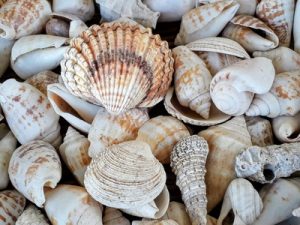
Step 5: Add Decorations
After you have planted your plants, add decorations to enhance the beauty of the terrarium.
These can be things like shells or pine cones. Use the spray bottle to water the plants.
Other Types of Terrariums
You can use a moss terrarium because they look great and are easy to maintain. Moss also pairs well with sand and rocks. Most terrariums come in different colors, textures.
You can also have an orchid terrarium. They are often bright in color and make the terrarium look great. An orchid will pair well with succulents, air plants, and mosses.
How to Take Care of Your Plants in the Terrarium
Terrariums are easy to maintain and long-lasting. However, you need to do some proper care:
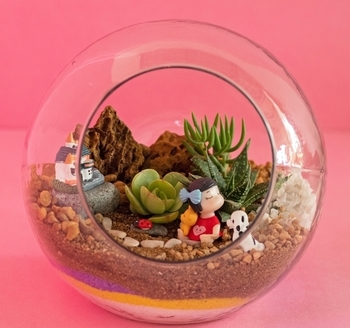
Tip # 1 – If you are growing ferns, use the garden scissors to trim the leaves to prevent them from overgrowing. If any of the plants start getting yellow or you see brown leaves, it is a sign of pests or disease infestation. Remove it immediately.
Tip # 2 – Always monitor the plants for pests like gnats or mealy bugs. You can apply insecticidal soaps to the plants or buy pebbles or rocks to prevent overwatering.
Tip # 3 – If you are planning to have a closed terrarium, consider removing the lid often to let in some air. You should water it once a month.
Tip # 4 – If it is an open terrarium, water it every 3 to 6 weeks. However, always check the soil to determine when you need water. It is wiser to have a water calendar that shows you the ideal time to water your terrarium. You can even mark whose turn it is to water the plants. Make the project a family affair!
Make a Creative Indoor Terrarium Garden Today!
A terrarium is a mini-garden enclosed in a container, jar, or bowl. You need to get an ideal container to add decorations and plants to and consistently water it! The plants will take in the water on their own through condensation!
Terrariums are ideal for plants that would be difficult to grow in dry air. Also, if you are in a confined space, you can choose to plant crops in terrariums. In addition, the three types of lights you can provide to terrariums are direct, indirect, and artificial. They also don’t need to be watered so often. Surprisingly, terrariums also don’t smell at all.
What are you waiting for? Gather all the materials you need and start your terrarium garden!
Happy Gardening!
Image Courtesy: Unsplash.com, Pixabay.com


